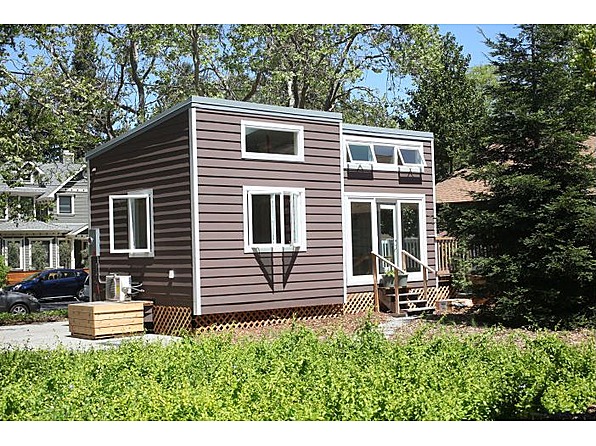Senator Bob Wiecowski and San Jose Vice-Mayor Rose Herrera drew upon research from SV@Home to buttress their recent editorial supporting secondary units as an addition to the affordable housing toolbox.
Read the original article at the San Jose Mercury News.
In September, Gov. Jerry Brown signed into law Senate Bill 1069 (Wieckowski), a bill to encourage the development of accessory dwelling units throughout California. While this bill is an important first step, cities must now do their part by easing regulatory constraints on building these units to address our housing crisis.
Sometimes referred to as “in-law units” or “secondary units,” these are self-contained housing units that are secondary to the main residence. They are often located in backyards of single-family lots, but can also be attached to the main house.
As such, they unlock the opportunity for development within the existing fabric of our single family residential neighborhoods, adding capacity and creating units that, by nature of their smaller size, are more affordable to build and rent.
Especially in Santa Clara County, where the primary land use is single family homes, secondary units can play a critical role in alleviating the affordability crisis by increasing the supply of housing while working within the confines of existing zoning policies.
Consider these numbers: iI just 10 percent of the approximately 342,500 single family homeowners in Santa Clara County were to add accessory units to their properties, we could add more than 34,000 units to our housing stock – 34,000 naturally affordable units that can reduce the gap of at least 67,000 homes needed for low- and moderate-income households throughout the county.
This can help prevent displacement of teachers, nurses, service workers and other key members of our community. The units can help keep families together, often providing a way for retirees or returning college graduates to continue living near family, when they otherwise wouldn’t be able to afford to stay.
Furthermore, accessory units promote equitable home ownership: As a potential source of rental income, they can open doors to home ownership for those who otherwise cannot afford a mortgage, or they can help current homeowners afford to stay.
Yet the number of these units actually built each year in the county is small. According to Silicon Valley at Home (SV@Home), an affordable housing policy and advocacy organization, in recent years fewer than 90 permits have been issued annually county wide—and San Jose averages only 13. We can and must build more.
In response to SB 1069 and the potential for accessory dwelling unit development, many cities in the county are proposing revisions to their current ordinances. SB 1069 encourages accessory dwelling unit construction by modernizing regulations, streamlining processes and reducing fees.
On Tuesday, the San Jose City Council will hear staff recommendations to amend the city’s second unit ordinance to incorporate the provisions of SB 1069. We urge the City Council to show its leadership by not only approving these changes but also taking bold action to enable the conversion of existing accessory structures, allow for the legalization of existing nonconforming secondary homes without steep penalties, create standards that increase the number of lots that can accommodate an accessory unit and simplify the process for homeowners.
No one strategy can fix the housing crisis on its own, but accessory units can make a meaningful difference. Given this potential, every city and town in Santa Clara County should seize the opportunity to encourage accessory dwelling unit development.
Sen. Bob Wieckowski, D-Fremont, represents State Senate District 10. Vice Mayor Rose Herrera represents District 8 on the San Jose City Council. They wrote this for The Mercury News.

